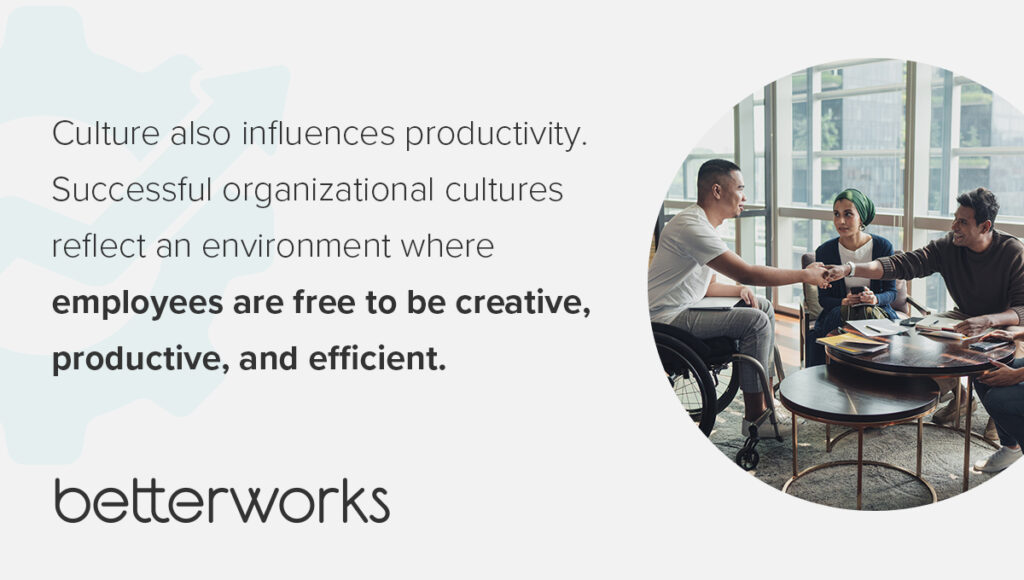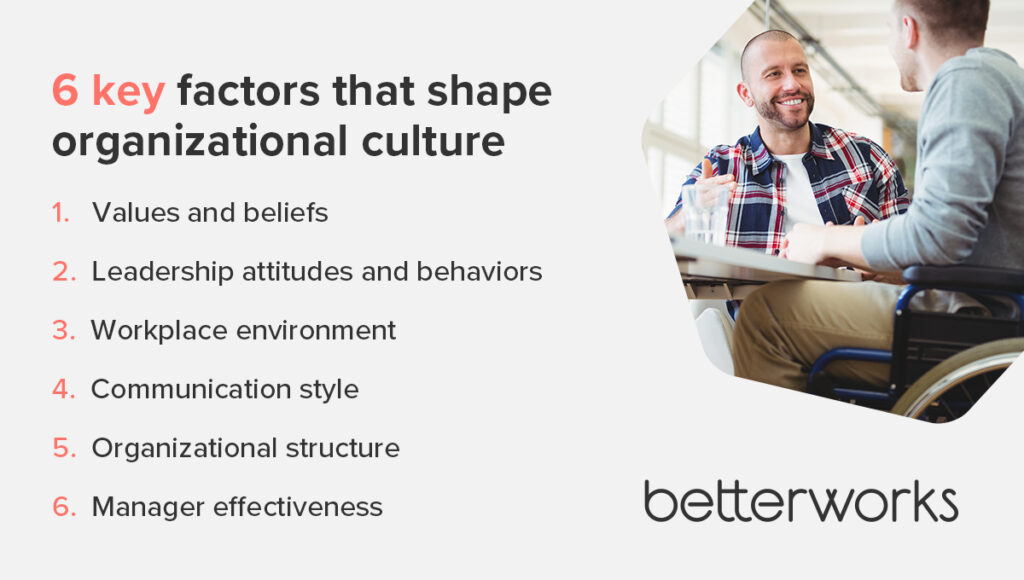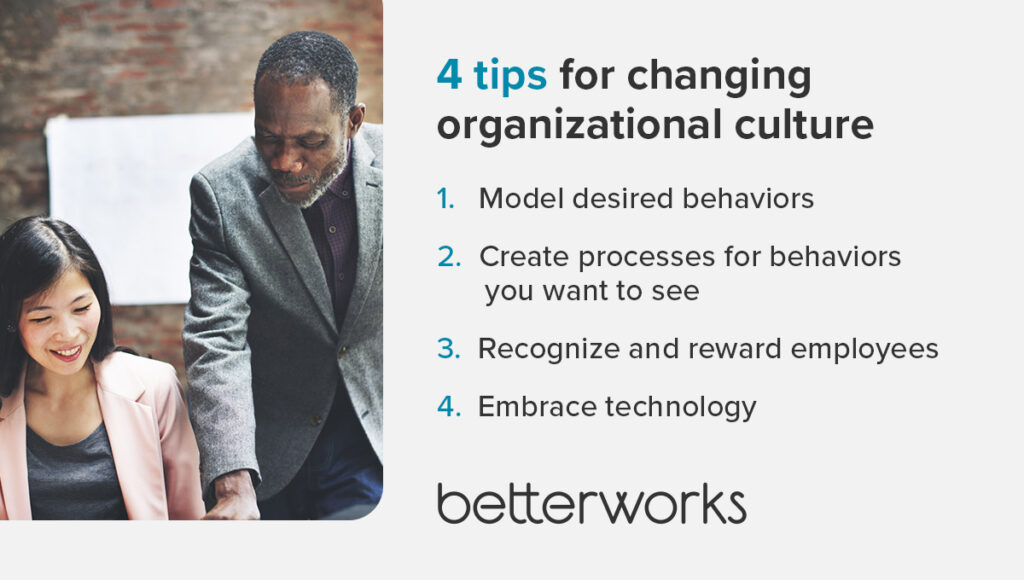Your company culture is a key driver of workforce happiness and business success. But what if your culture isn’t what you want it to be? Changing organizational culture can be one of the most important challenges HR leaders will ever face. You’ll need to identify current cultural norms, understand how they affect your organization, and create a plan for achieving a culture that supports the business.
Why does this work matter? When employees have a strong sense that their organization cares for them, their sense of thriving at work increases by a staggering 378%, according to O.C. Tanner’s 2025 Global Culture Report. And employees who are thriving, the report continues, are 12x more likely to feel high engagement and 7x more likely to do great work.
Clearly, workplace culture directly impacts your bottom line—and it’s not something business leaders can afford to leave to chance.
If your workforce isn’t as happy, engaged, and purpose-driven as you’d like, you might be due for a culture transformation. Get started on your change journey by learning more about organizational culture, how (and when) to change it, and how HR can improve company culture to drive business impact.
What is organizational culture, and why does it matter?
Organizational culture is the shared values, beliefs, behaviors, and norms that guide people’s actions and decisions within a company. Culture matters because workforce attitudes and behaviors directly affect key people outcomes such as employee engagement, productivity, and retention.
Employee engagement is a key element of company culture. When employees feel connected to the mission and values of the organization, they’re more likely to be motivated to do their best work. An organization with a strong culture results in employees taking on meaningful work and feeling a sense of belonging. The resulting outcomes include higher morale, increased job satisfaction, and better performance.
Culture also influences productivity. Successful organizational cultures reflect an environment where employees are free to be creative, productive, and efficient. Employees are often more productive when they understand the company’s goals, know their role in success, and feel like they’re part of a team.
Organizational culture also plays an important role in employee retention. When employees feel valued and aligned with the culture, they’re more likely to stay rather than look for other opportunities.

6 key factors that shape organizational culture
Culture doesn’t happen by accident. It’s shaped by several key factors, and savvy HR leaders use this knowledge to influence day-to-day activities, processes, and norms. Discover six important factors influencing your culture.
Values and beliefs
Your company’s core values and beliefs inform decision-making and powerfully influence your organization’s culture. Culture is reinforced by your workforce’s actions and by what leaders, managers, and peers choose to recognize and reward. The challenge for HR leaders is to have people practice and reward behaviors that align with company values.
For example, if a company values going the extra mile, the culture will likely reflect this through performance management processes and by managers who encourage team members to be determined and persistent at work. Too much of this value can create problems, however. Employees might feel pressured to work extra hours or to be always available, which can ultimately lead to burnout. Or they might miss deadlines because “go the extra mile” is prioritized over completing deliverables on time.
Leadership attitudes and behaviors
Company leaders’ attitudes and behaviors have a big impact on culture. They set the standards for how employees should act, communicate, and interact. Leadership behaviors can be contagious, for good or bad.
Leaders who are open-minded, supportive, and encouraging will create a culture of inclusion, trust, and collaboration. This manifests in something as simple as a vice president asking a front-line employee for their opinion, listening closely, and following up on what they hear. That behavior signals an innovative culture where every perspective matters.
Leaders who are closed-minded, unsupportive, or overly critical, on the other hand, create a culture of fear and mistrust. In this environment, employees are more likely to disengage and less likely to take risks or attempt to innovate.
Workplace environment
The physical workplace can affect company culture by shaping how employees interact with each other and view the company. A well-designed office space can create a productive atmosphere that encourages collaboration and innovation. On the other hand, a poorly designed office space can make employees feel uncomfortable and unproductive.
The environment’s influence on company culture is even more complicated in remote and hybrid workplaces. You have less control over the look and feel of a team member’s home office than a shared space, but remote work engagement is no less important.
Consider what your organization can do to reinforce the culture and support a productive home workspace. This could include covering the cost of ergonomic office furniture or ensuring that everyone uses inclusive communication technology.
Every company, even those that work entirely on-site, also experiences a digital environment that influences norms and expectations. For example, making everyone’s goals visible across the organization can show that HR values transparency and encourages cross-functional collaboration.
Communication style
Good communication leads to open and honest dialogue, strong relationships, and alignment with the company’s goals and objectives. Customer satisfaction also depends on clear, consistent, and engaging communication from employees.
A positive company culture relies on open communication and respect. This can take many forms, such as regular “town hall” meetings where employees can share ideas, questions, and concerns with management. This is just one way companies can help employees feel heard and respected. Done well, your workforce feels more engaged and is eager to contribute ideas, seize opportunities, and work through difficult problems.
However, poor communication creates a negative environment with more conflict and lower morale. One way this manifests is when senior management is known for withholding key information and surprising the workforce with bad news. Team members will naturally begin to fear the unknown, which can harm engagement, productivity, and retention.
Organizational structure
Your organization’s structure determines each employee’s level of autonomy and how bureaucratic you are — both of which influence culture. Companies with strong hierarchies and limited autonomy will restrict most decision-making and input to executives, creating a top-down culture.
A more flexible and decentralized organizational structure will give teams and employees more autonomy and decision-making power, which can lead to a more collaborative culture and greater authenticity at work. While there are many ways to organize your business, each has trade-offs for culture.
The type of structure an organization chooses will also affect communication within the organization. A hierarchical structure emphasizes formal, top-down communication channels, while a decentralized structure is more open and free-flowing in communication between employees and management.
Manager effectiveness
Managers are the link between company leadership and employees, making their effectiveness a key factor in shaping organizational culture. How managers set expectations, provide feedback, and support employee growth influences whether a culture is collaborative and high-performing or stagnant and disengaged.
Strong managers act as coaches, guiding employees through challenges, recognizing achievements, and fostering a culture of growth. The manager-as-coach approach prioritizes development over direction, helping employees build skills and confidence in their roles. How can managers empower employees? By setting clear expectations, providing regular feedback, and offering opportunities for career advancement, they create an environment where employees feel valued and motivated.
On the other hand, ineffective management—whether due to poor communication, lack of feedback, or micromanagement—can lead to low engagement, high turnover, and a toxic work environment. Employees who don’t receive clear guidance or recognition may feel disconnected from company goals, reducing motivation and performance.
HR leaders play a critical role in shaping manager effectiveness by providing training, coaching resources, and AI-powered performance management tools. Investing in these areas is an essential part of how HR can improve employee experience, ensuring managers have the skills and insights they need to support, engage, and empower employees effectively.

When is organizational culture change necessary?
Knowing when to reimagine culture at work isn’t easy. Generally, you should engage in organizational culture change when your current culture no longer serves its purpose for the business. For example, if the company’s goals have shifted out of alignment with the culture, then you’ll need to examine what culture changes are needed.
Culture change is also required when the company’s competitive landscape has shifted—for example, shifting from prioritizing stability to emphasizing flexibility and agility in the face of a rapidly changing environment.
Of course, deciding to change your culture is more difficult when you aren’t sure of your current state. Organizational culture assessment instruments can help you analyze your organization and determine what changes are needed to realign culture with business goals.
Tools such as the competing values framework can help you assess what’s most valued within the company culture. Other ways to assess organizational culture include employee surveys, interviews, and focus groups, which provide qualitative data you can use to define your culture’s dominant characteristics.
Long-term indicators that a change in organizational culture is needed include declining employee engagement, lower productivity, and higher turnover. Additionally, if customer feedback is negative or customer loyalty is declining, then you may need to invest in a culture change to transform employee attitudes and behaviors for the better.
4 tips for changing organizational culture
There are several approaches you can take to transform organizational culture, and you can combine some or all of them to customize your change plan. Discover four ways to get started in your organization.
Model desired behaviors
Members of your leadership team serve as your organization’s cultural architects. They lay the foundation for a positive and thriving work environment by role-modeling the behaviors and values they wish to see in their teams. Their words and actions inspire employees to follow suit, fostering a strong sense of shared purpose and identity within the organization.
Employees are motivated by witnessing their leaders displaying desired behaviors and values. They will seek to emulate such leadership, creating a positive ripple effect throughout the organization.
Create processes for behaviors you want to see
One of the most effective ways to instigate lasting change is by embedding it within daily processes. This helps managers and their teams build better habits. Your employees make progress without having to consciously think about culture. A powerful example of this in action is when HR leaders shift from a traditional performance management model to a performance enablement model.
Performance enablement is characterized by ongoing coaching conversations between managers and their team members, which can have a net positive effect on culture. Well-coached employees are more likely to feel engaged and productive, and that they belong and are valued.
Recognize and reward employees
Rewarding and recognizing employees for exhibiting the desired behaviors and values within the organization can create a positive reinforcement loop that integrates and reinforces the culture change.
Make sure you call out and reward employees for actions that align with the company’s business goals and values. Doing so encourages them to repeat such positive actions while communicating the organization’s commitment to those values. These rewards can take many forms, including bonuses, promotions, public recognition, or opportunities for professional development.
By linking rewards to specific behaviors and values, leaders amplify these qualities and their impact on the organization’s long-term success.
Embrace technology
The right technology, used in the right way, unlocks new ways to deliver and amplify your culture change initiatives. You can use communication platforms and social collaboration tools to inform employees about desired cultural shifts, for example, and facilitate meaningful discussions.
Performance management software helps organizations change culture by making expectations clear, reinforcing company values, and creating accountability. It gives employees a direct line of sight into how their work connects to company goals, while regular feedback ensures they know where they stand and how to improve. Managers can track progress, recognize contributions, and adjust coaching based on real data. When performance is managed consistently, cultural shifts become more than just talk—they become part of how work gets done.
Online learning and training platforms can deliver targeted educational programs on new cultural values and behaviors. Employees will understand the transformation and how to put it into practice.
Data analytics and sentiment analysis tools, meanwhile, allow organizations to monitor the progress of culture change efforts and track employee sentiment and engagement. A comprehensive technology strategy helps companies foster—and measure—a culture that’s adaptable, forward-thinking, and responsive to evolving challenges.

How can HR improve company culture?
You play a key role in shaping company culture, but HR challenges like burnout, disengagement, and unclear career paths make it difficult to create a positive work environment. Employees want clear expectations, recognition, and opportunities to grow.
One way to improve company culture is to use AI-driven performance management. AI helps spot engagement risks, track progress, and personalize career development. Employees tend to be more engaged and motivated when they have clear goals and growth paths.
HR can also help managers become better coaches. AI-powered coaching tools support managers by providing real-time feedback, tracking team sentiment, and guiding conversations. This is especially useful in hybrid and remote teams, where regular check-ins keep employees connected.
By using AI and performance management software, you can create a culture of clarity, recognition, and growth, making work more engaging and rewarding for employees.
Changing organizational culture for the better
Culture change can feel daunting, but the results are powerful—and attainable. HR leaders have a unique opportunity to empower managers to model desired behaviors, foster open communication, and leverage technology to facilitate change. The result? Companies that create positive work environments that inspire and engage employees at every level.
Embrace this cultural evolution with optimism and determination. Changing organizational culture can unlock your workforce’s untapped potential, create a workplace where employees thrive, and power the business to new heights.
Want to learn more? Discover how organizations just like yours are aligning culture and strategy.
How can you align culture and strategy?



